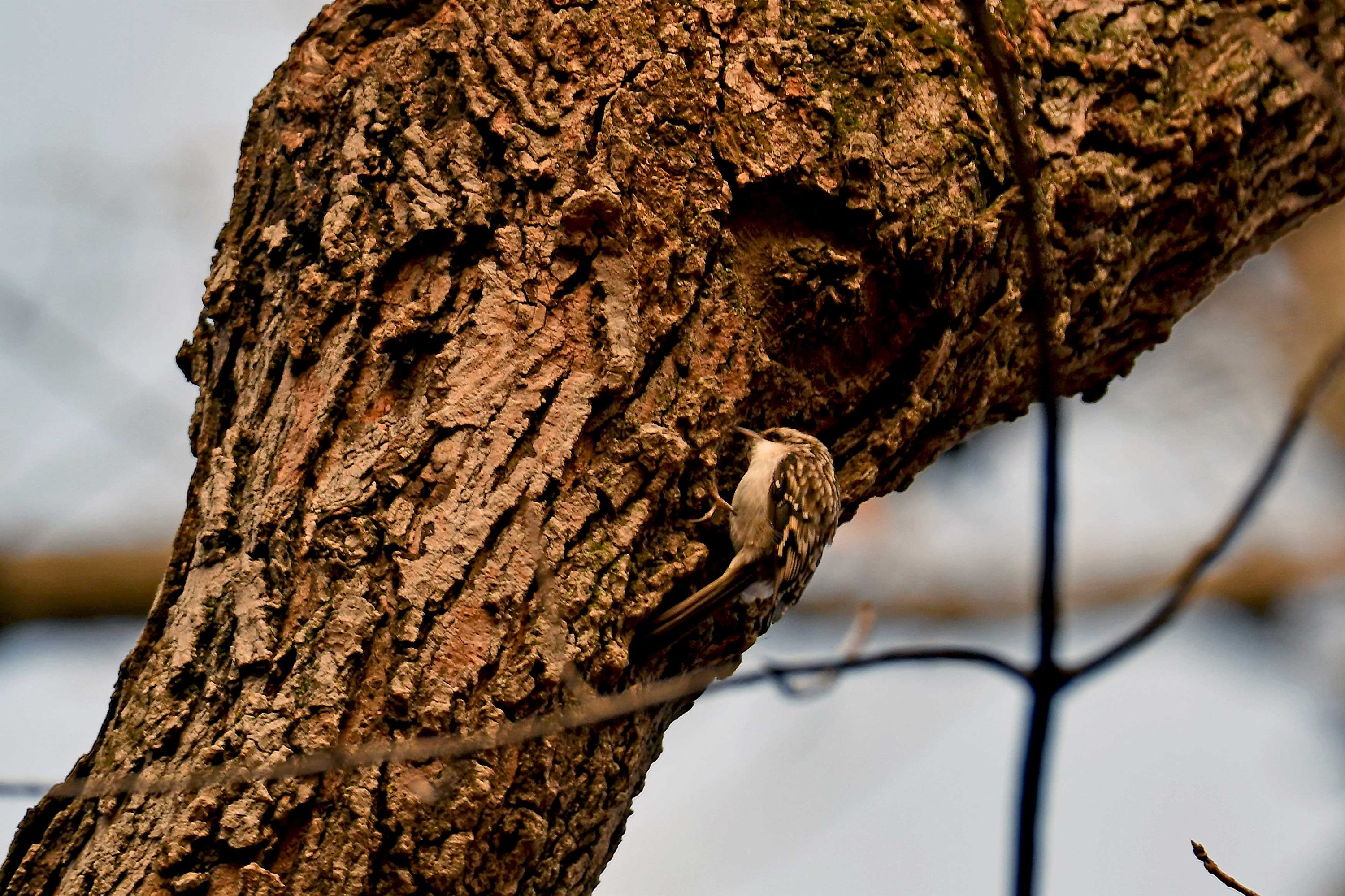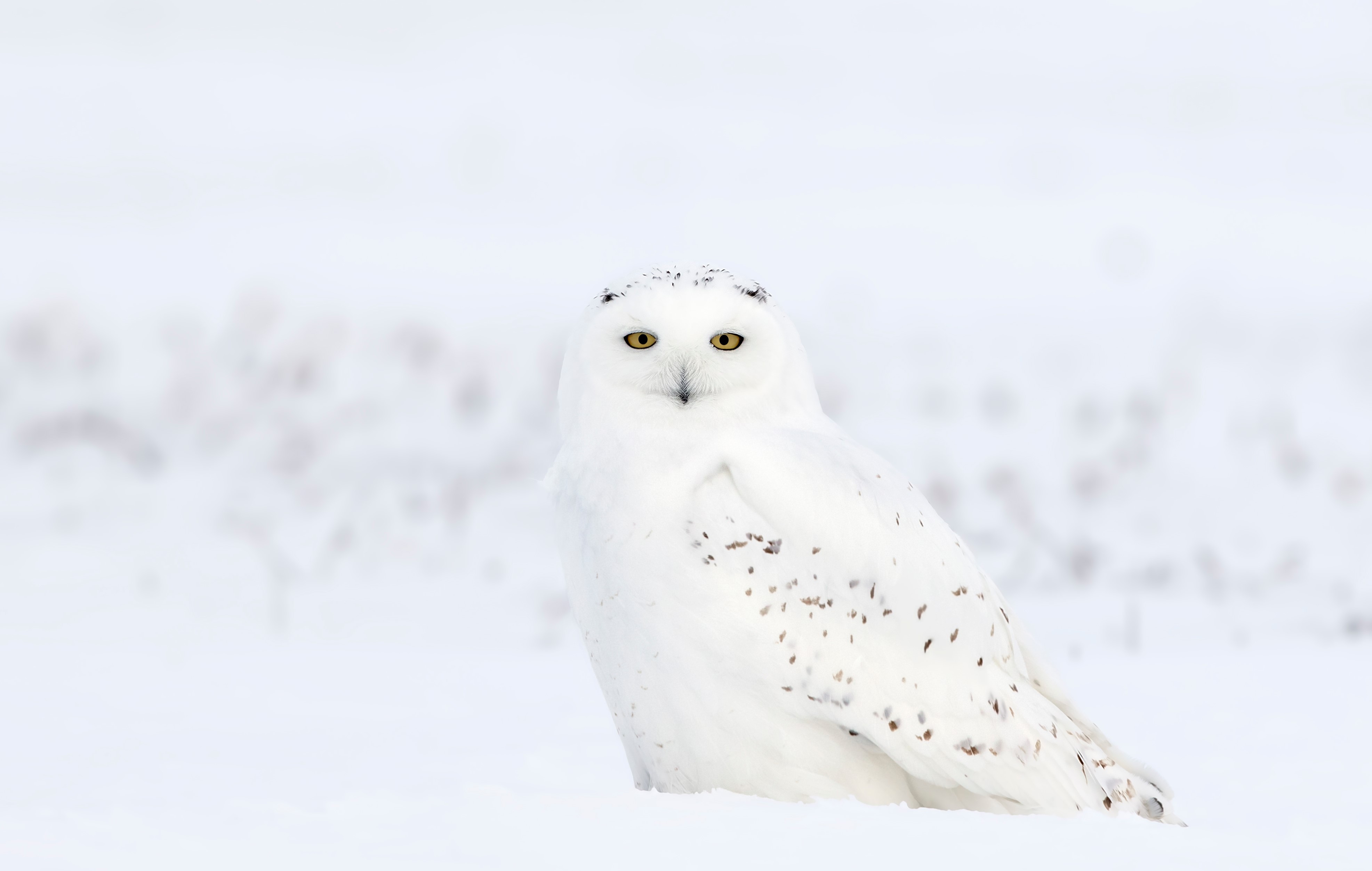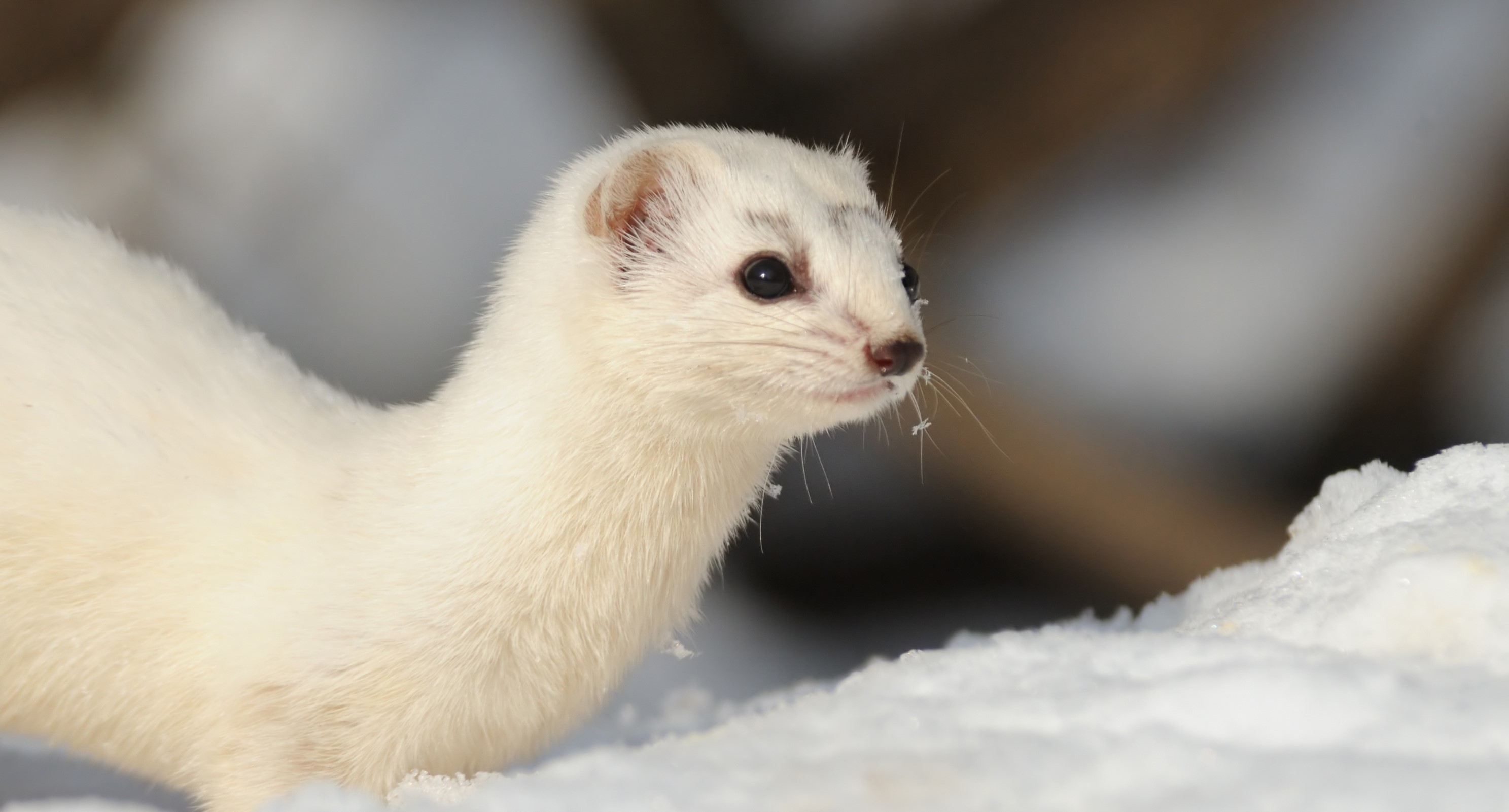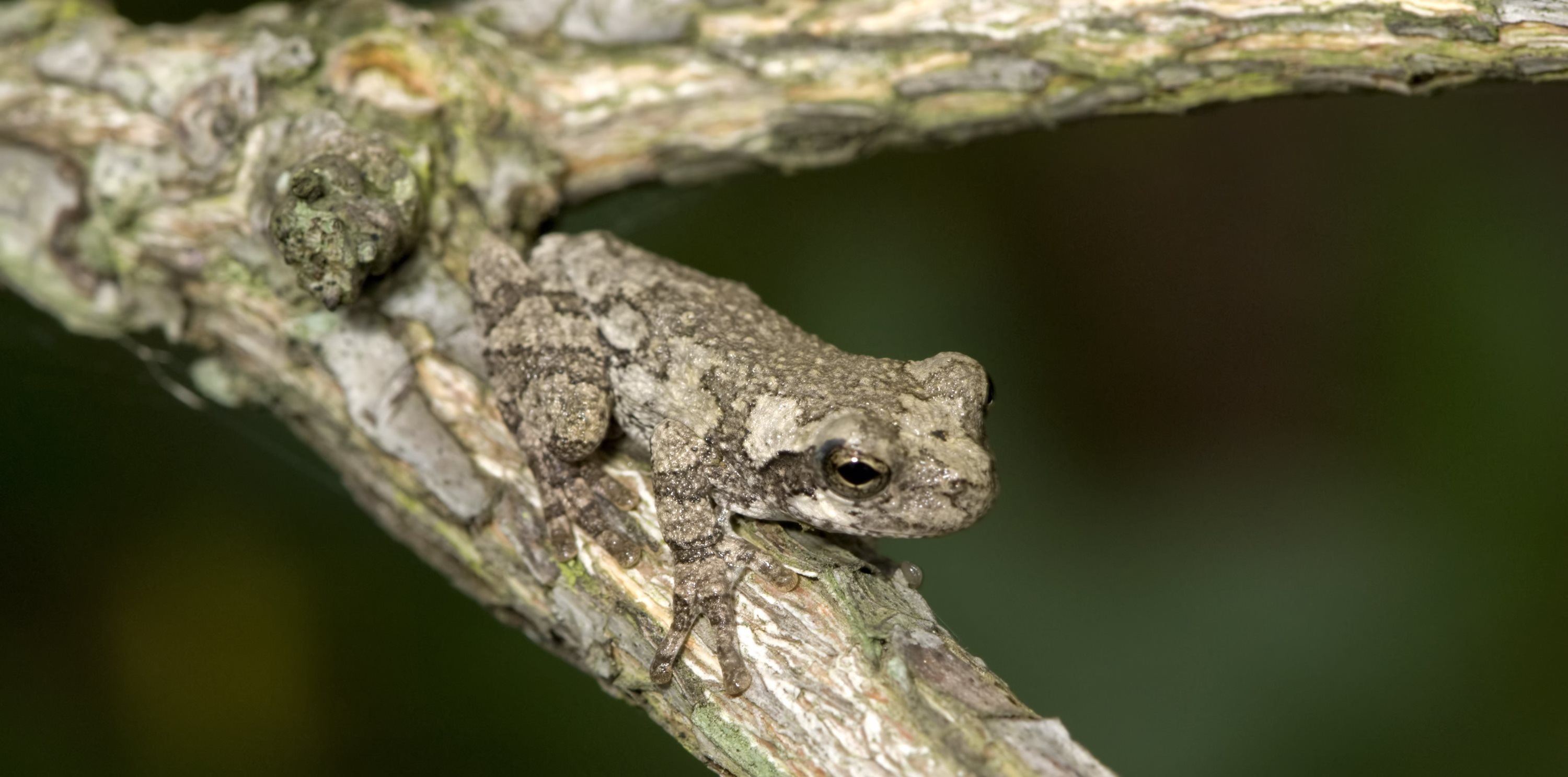Which Animal Has The Best Camouflage Ability
| Story by Meghan McMahon |
12/10/2021
In the animal kingdom, information technology's often consume or be eaten, so many species accept developed some clever defense mechanisms to assist keep them condom from predators.
Some of the most well-known are also the most effective. Take skunks, famous for their noxious-smelling spray. Information technology seems to work, as well, because few animals are known to consume skunks. Others are downright wacky, like the Texas horned lizard. These lizards tin can eject blood from their eyes in an attempt to continue predators away. And don't forget about opossums, which go to the drastic measure out of pretending to be dead to relieve themselves from attack.
1 of the less historic animate being defense mechanisms is camouflage. Many animals rely on their coloring to help them avoid detection. In the animal kingdom, in that location are iv types of cover-up: concealing coloration, disguise, disruptive coloration and mimicry, according to the Michigan State University Extension. Concealing coloration is when animals blend in with their surround, while disruptive coloration is when an fauna has a pattern like spots or stripes that make it difficult to run across its outline. Camouflage by disguise is when an brute looks like something else entirely to help it blend in. Mimicry is when a harmless animal looks like to an beast that is poisonous or venomous to help it avoid predation. The virtually well-known example of mimicry is viceroy collywobbles, which look very similar to monarchs — poisonous to many creatures because of the milkweed they eat.
Among the better-known animals that rely on cover-up are those that plow white in winter, like Arctic foxes. These foxes live in the Arctic tundra, and their fur changes color with the seasons, according to National Geographic. In the summer, they are brownish-greyness in colour, allowing them to blend in with the plants and rocks of the tundra. In the winter, however, they turn a stark white so they can escape detection in the snow.
A little closer to domicile is the snowshoe hare, which, similar to the Chill fob, changes color throughout the year to better blend in with its surroundings, according to the National Wildlife Federation. Snowshoe hares live in parts of the Unites States, including the Rocky Mountains, the Appalachian Mountains, the Pacific Northwest, New England and parts of Michigan, Minnesota and Montana. In the winter, snowshoe hares are white, helping them blend in with their snowy environs. During the warmer times of the year, they are a reddish-brown colour, better matching the rocks and clay in their habitat.
Here'southward a look at some of the animals closer to habitation that stand out for blending in.
Brown creeper
)
(Photo by Glenn P. Knoblock)
Many songbirds seem designed to stand out confronting a canopy of trees. Take the scarlet tanager and northern central, both of which are hard to miss with their vivid red plume. Or blue jays, which are similarly easy to spot. But non so with the dark-brown creeper, which blends in about perfectly with tree bark.
These small, sparrow-sized birds have mottled dark-brown backs and heads, according to the Cornell Lab of Ornithology. This allows them to remain inconspicuous while doing what they spend most of their time doing — meandering upwards and downwards tree trunks looking for insects to eat.
So skillful is their cover-up that it'southward frequently easier to identify a brown creeper by its vocal than by scouring tree trunks in hopes of catching a glimpse of information technology moving around. Just the male birds sing, but it's a high, sugariness-sounding song, sometimes said to sound like they are calling out "trees, trees beautiful trees."
Owls
)
(Photograph via Shutterstock)
While many songbirds seem to stand out in their environs, many owls seem designed to blend in. Several of the owls that populate our forests are difficult to meet in even the all-time of circumstances, and not just considering they are nocturnal.
Swell horned owls are generally nocturnal, but even by day these large owls are difficult to spot thanks to their barred brownish, gray, blackness and white markings that aid them blend in well in their forested habitat. Fifty-fifty those ear tufts, which aren't ears or horns, help owls cover-up themselves, The Spruce reports.
Eastern screech owls are also masters of camouflage, both considering their markings assist them blend in with the trees and considering they oftentimes constrict themselves into modest tree cavities, peeking just their heads out on a sunny 24-hour interval, the Cornell Lab reports.
SUBSCRIBE TO OUR YOUTUBE Aqueduct
Snowy owls also utilize cover-up, but only in winter. Unlike Arctic foxes and snowshoe hares, snowy owls are white all yr. They spend their summers in the tundra in far northern Canada and then head south to other parts of Canada and the northern U.s.a., sometimes traveling equally far south as southern Illinois. During the winter, their nearly all-white feather helps them alloy in with their often snowy environs, according to the National Audubon Society.
Bitterns
)
(Photo courtesy of Carl Molano)
Both American bitterns and least bitterns are wading birds, and their markings make it difficult to see them amidst the tall grasses and reeds along the water'south edge where they like to hang out. These bitterns eat aquatic animals and, while hunting, they stand notwithstanding at the edge of the h2o, among the vegetation, and wait, and so jab their bills into their grab, according to Cornell Lab.
Both American bitterns and to the lowest degree bitterns accept streaked breasts that help them blend in, but American bitterns have the better camouflage of the two. The longs streaks on their breasts spread upwardly to their necks, making them difficult to discern from the marshy vegetation where they stalk their prey. While their coloring certainly helps them blend in, they are also difficult to discover along the water'due south edge considering of their ability to stand up even so for so long.
Walking sticks
)
(Photo via Shutterstock)
You could be looking right at a walking stick and never know it because these insects are cleverly disguised, blending right in with the plants they live on. These bugs are and then well camouflaged that they actually look like sticks with legs, and fifty-fifty their legs look like sticks.
The world is home to more than three,000 species of walking sticks, and each has camouflage designed for their specific habitats, according to the San Diego Zoo. Most are greenish or dark-brown, but walking sticks tin likewise be grey, black or even blue, depending on what they need to blend in with.
Equally practiced equally their cover-up may be, walking sticks are preyed on by some creatures. To assist them from becoming another creature'south meal, many walking sticks have developed other defense mechanisms as well. Some can emit a bad-smelling substance to keep predators away. Others flash their wings as a warning to predators, and even so others can employ their wings to aid them quickly drop to the basis to escape danger.
SUBSCRIBE TO OUR YOUTUBE Channel
Katydids
)
(Photo via Shutterstock)
Of the more than than 6,000 species of katydids in the world, most are green, which is useful for blending in with the foliage on the plants where they alive, co-ordinate to Academy of Wisconsin Horticulture Sectionalization of Extension.
In addition to their greenish color, katydids often take wings that are shaped like leaves, some other characteristic that helps disguise them and avoid beingness eaten. A condition chosen erythrism affects about ane in 500 katydids, causing them to be pinkish instead of light-green. In nature, this is not beneficial to the insects because they lose their power to blend in and are more likely to be predated, according to the University of Wisconsin.
Amidst insects, it'south not just katydids and walking sticks that stand out at blending in. The world of insects is actually full of masters of camouflage. Take the dead foliage butterfly, which looks similar — yous guessed it — a expressionless foliage, making it hard to spot in its typical habitat, Treehugger reports. The orchid mantis looks shockingly like part of the blossom from an orchid plant, and the sand grasshopper almost perfectly blends in with the sandy soils where it lives.
Weasels
)
(Photo via Shutterstock)
A few mammals nosotros see locally, like white-tailed deer, apply concealing coloration and disruptive coloration to an extent to help them blend into their environment, but weasels are one that take it to another level. Like Chill foxes and snowshoe hares, some species of weasels change color during the year to help them escape detection.
In the summertime, the back, sides, tail and head of least weasels and long-tailed weasels — the simply weasel species that live in Illinois — are a reddish-brown colour, while their underparts are white, according to the Illinois Department of Natural Resources. In the winter, however, many weasels turn fully white to better friction match their sometimes snowy habitat. During spring and fall, the weasels tin take a mix of white and ruby-brown fur equally the color transformation is taking place.
This color change is more than common in weasels that live in northern Illinois because snow is more prevalent here, Wildlife Illinois reports. In areas where snow is not as mutual, weasels oftentimes develop white patches on their reddish-brown coats.
Gray tree frogs
)
(Photo via Shutterstock)
Gray tree frogs are small frogs that typically live in the woodlands well-nigh waterways, and there'due south a skilful chance you've never seen 1, merely not because of their small-scale size. Instead, it's because these frogs can change color based on their environment and activities, helping them blend in nicely no affair where they happen to be.
These frogs, too chosen chameleon tree frogs, can modify color considering the shape of their pigment cells changes in response to weather condition such equally light and temperature, according to the Illinois Natural History Survey. In depression lite or when temperatures drop, the pigment cells aggrandize, making their skin appear darker. When there's more light or temperatures increment, the shrinking cells brand them appear a brighter color.
The gray tree frog may excel at camouflage because of its colour-irresolute ability, simply many frogs and toads are able to blend into their surroundings because of their coloring. Nearly frogs and toads nosotros see are greenish or greenish-brown, which helps them blend in with their normal habitat and escape detection by predators.
(Lead image via Shutterstock)
Source: https://www.reconnectwithnature.org/News-Events/Big-Features/These-animals-are-masters-of-camouflage
Posted by: baileythessalky.blogspot.com

0 Response to "Which Animal Has The Best Camouflage Ability"
Post a Comment